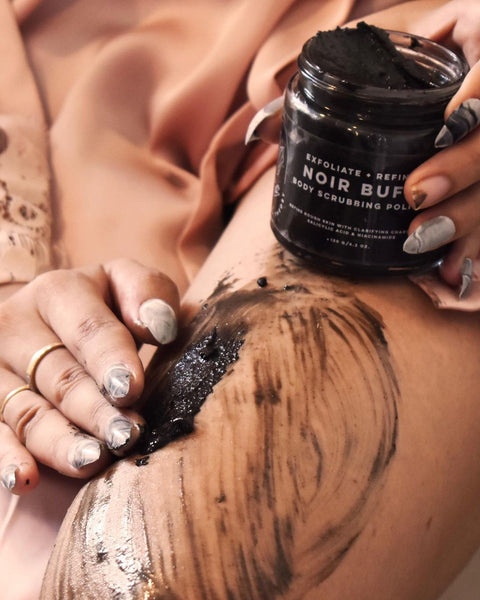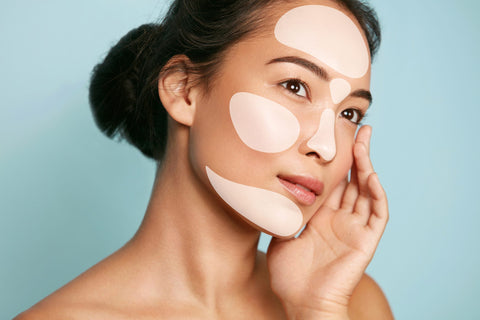Everyone wants glowing, glowing skin. It can be an impossible goal in skin care particularly as we age as cell turnover decreases while dead skin cells may cause dull complexion.1 The good news is that , with an effective exfoliation routine for your body and face you can easily and effectively eliminate the dead skin layer and restore your natural glowing, radiant glow. Exfoliation can help serums and moisturisers to penetrate more deeply into the skin, and make the foundation to glide effortlessly instead of sitting on top of rough skin.
However, with the myriad of skincare products available advertising themselves as the top exfoliants for your face, feet and elbows as well as a myriad of contradicting tips on how to use them, it's difficult to determine where to start and what to choose.
products to apply and how best to exfoliate your skin and body. We asked three experts on skincare to get the most effective tips and advice on how to exfoliate your skin properly.
Why Should We Exfoliate?
Simply put, exfoliation refers to the procedure of eliminating dead skin cells off the surface of the skin. It is generally considered to be one of the most crucial practices in skincare, since it eliminates dry, flaky and dull skin cells that build up around the facial area. After exfoliating, your skin's surface is more able to absorb the products that applied to it. Exfoliation also aids in unblocking the pores, which could help prevent irritation and breakouts.
But that's not all. Exfoliating can also increase circulation. This helps with collagen production, ensuring that your skin appears more elastic and looks younger. Also, eliminating flaky or dry skin will improve both texture and tone for a more radiant, healthier appearance. The skin is more soft and smooth and also more radiant. Exfoliating leaves your skin looking and feeling as if it's radiant!
How often should we perform Exfoliation?
The number of times you need to exfoliate each week will depend on your type and your tolerance. If you are exfoliating too often you could be at risk of the possibility of permanent damage and degradation to your skin. This can cause redness and irritation. We recommend this usage chart depending on the type of skin you have:
Dry skin: 1-2 times a week
Normal skin: 2-3 times per week
Oily skin: 3-4 times per week
Skin Sensitive: Once per week
When is the Best Time to Exfoliate?
The first thing in the morning! While you are able to exfoliate anytime during your daytime, it's better to cleanse early during the day. The skin is actually renewed in the night and leaves an unclean layer of skin. Therefore, the morning time is the best time to do it, as it removes the old skin cells that are dead to reveal new, soft glowing skin.
Introducing the 3 Methods of Exfoliation 
Physical
This is a procedure in which microbeads, particles or other scrub-like materials are used to buff off dead skin cells that are found at the face's top. Physical exfoliants make your skin feel immediately soft and soft and smooth. Some of the most sought-after are sugar scrubs Exfoliating brushes, coffee powder and microdermabrasion.
It is important to stay clear of exfoliants that are harsh and abrasive as they can cause tiny tears in the skin. These micro-tears could cause skin irritation and damage caused by free radicals. Exfoliation can be painful to those who have sensitive or extremely reactive skin types. It's recommended to apply exfoliants for your body and not on your face.
Chemical
Chemical exfoliants work under the skin's surface, causing it to break the bonds of protein that are formed between the dead cells of your skin. This assists in shedding dead, flaky skin which gives you your fresh skin. Chemical exfoliants can enhance the appearance of scars and they can also increase the pigmentation. But you have to ensure that you are taking the proper dosage as too much chemical exfoliant could cause burning to the skin. Acids are among the most popular chemical exfoliants, specifically beta-hydroxy acid (AHAs) as well as beta-hydroxy acids (BHAs).
AHAs are water-soluble acids such as glycolic or lactic acids, which are usually extracted by natural compounds. They are able to break the bonds that connect dead skin cells. They allow you to exfoliate and heal dry, aged and damaged skin. AHAs also help improve the appearance of skin and reduce the appearance of fine lines.
BHAs such as salicylic acid and tropic, are oil-soluble. This means they are able to penetrate deeper into pores than AHAs and remove dead skin cells as well as excessive sebum. They're ideal for those who have acne-prone skin because they effectively cleanse your pores and eliminate dead skin cells from the inside. Because BHAs are anti-inflammatory and can even reduce any swelling or redness that is caused by breakouts.
Botanical
One of the most effective methods to exfoliate is to use one that contains an enzyme. Like the name implies this kind of exfoliation is usually derived from grains or fruit enzymes, such as papaya or pineapple, as well as rice. These enzymes disintegrate and dissolve the layer of keratin on your skin's upper layers. These hold dead skin cells and allow your pores to open to allow for more efficient extraction. Because the enzymes are merely taking care of these cells, they do not have to worry about exfoliating too much. It's the least invasive method of exfoliation, and is suitable for all types of skin that include sensitive skin.
Recommended product- https://healingtheory.in/products/noir-buff-body-scrubbing-polish






